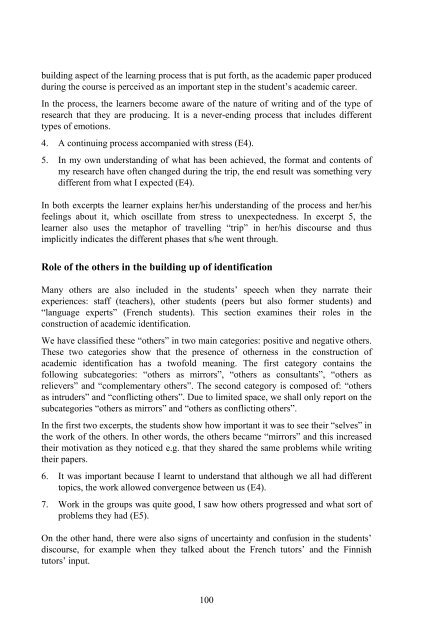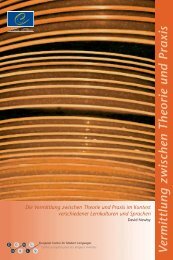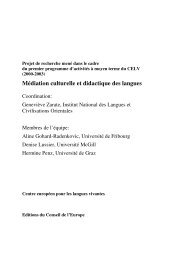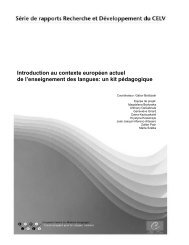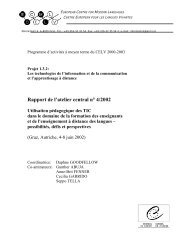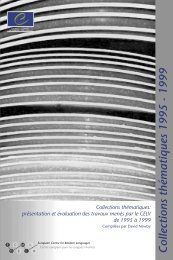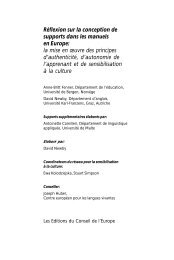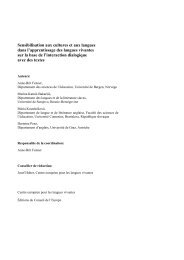cohesion - European Centre for Modern Languages
cohesion - European Centre for Modern Languages
cohesion - European Centre for Modern Languages
You also want an ePaper? Increase the reach of your titles
YUMPU automatically turns print PDFs into web optimized ePapers that Google loves.
uilding aspect of the learning process that is put <strong>for</strong>th, as the academic paper produced<br />
during the course is perceived as an important step in the student’s academic career.<br />
In the process, the learners become aware of the nature of writing and of the type of<br />
research that they are producing. It is a never-ending process that includes different<br />
types of emotions.<br />
4. A continuing process accompanied with stress (E4).<br />
5. In my own understanding of what has been achieved, the <strong>for</strong>mat and contents of<br />
my research have often changed during the trip, the end result was something very<br />
different from what I expected (E4).<br />
In both excerpts the learner explains her/his understanding of the process and her/his<br />
feelings about it, which oscillate from stress to unexpectedness. In excerpt 5, the<br />
learner also uses the metaphor of travelling “trip” in her/his discourse and thus<br />
implicitly indicates the different phases that s/he went through.<br />
Role of the others in the building up of identification<br />
Many others are also included in the students’ speech when they narrate their<br />
experiences: staff (teachers), other students (peers but also <strong>for</strong>mer students) and<br />
“language experts” (French students). This section examines their roles in the<br />
construction of academic identification.<br />
We have classified these “others” in two main categories: positive and negative others.<br />
These two categories show that the presence of otherness in the construction of<br />
academic identification has a twofold meaning. The first category contains the<br />
following subcategories: “others as mirrors”, “others as consultants”, “others as<br />
relievers” and “complementary others”. The second category is composed of: “others<br />
as intruders” and “conflicting others”. Due to limited space, we shall only report on the<br />
subcategories “others as mirrors” and “others as conflicting others”.<br />
In the first two excerpts, the students show how important it was to see their “selves” in<br />
the work of the others. In other words, the others became “mirrors” and this increased<br />
their motivation as they noticed e.g. that they shared the same problems while writing<br />
their papers.<br />
6. It was important because I learnt to understand that although we all had different<br />
topics, the work allowed convergence between us (E4).<br />
7. Work in the groups was quite good, I saw how others progressed and what sort of<br />
problems they had (E5).<br />
On the other hand, there were also signs of uncertainty and confusion in the students’<br />
discourse, <strong>for</strong> example when they talked about the French tutors’ and the Finnish<br />
tutors’ input.<br />
100


